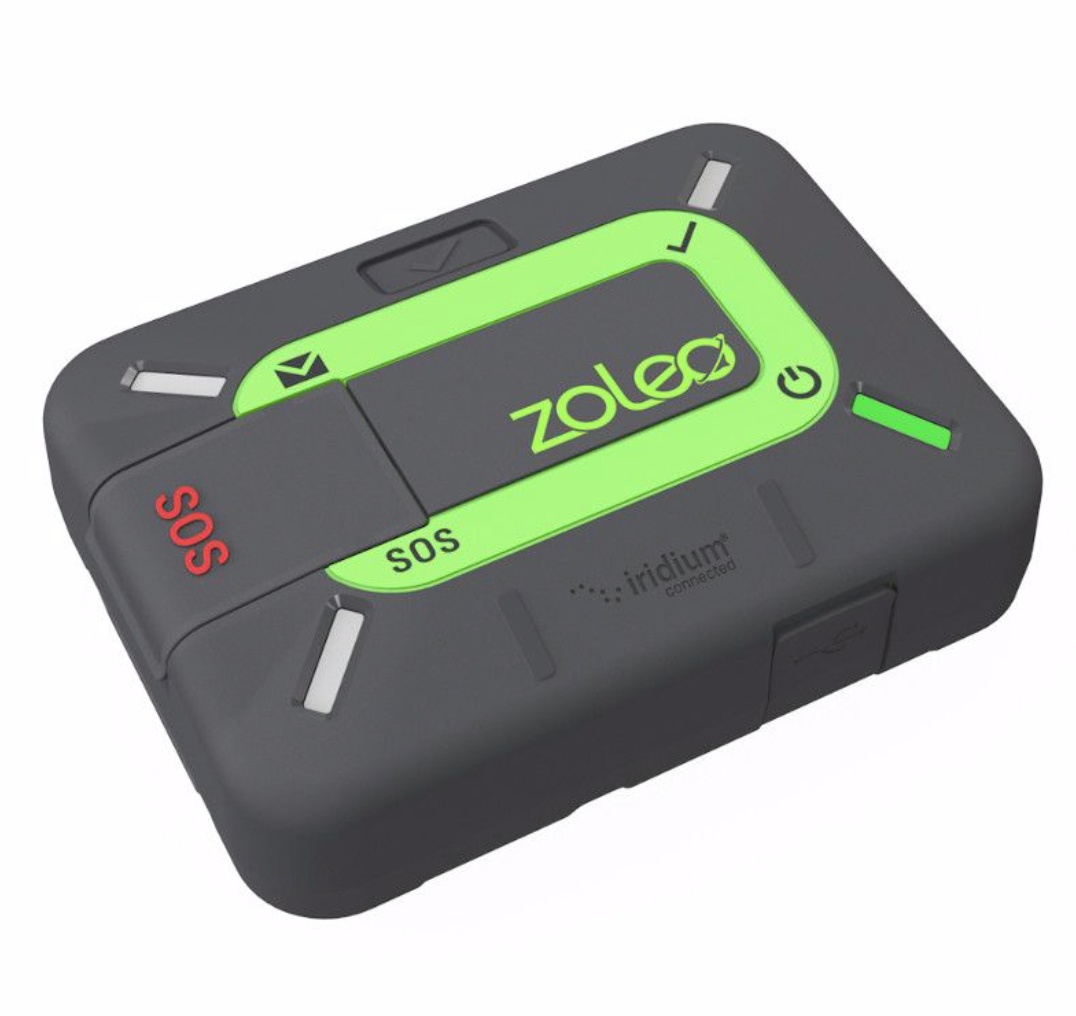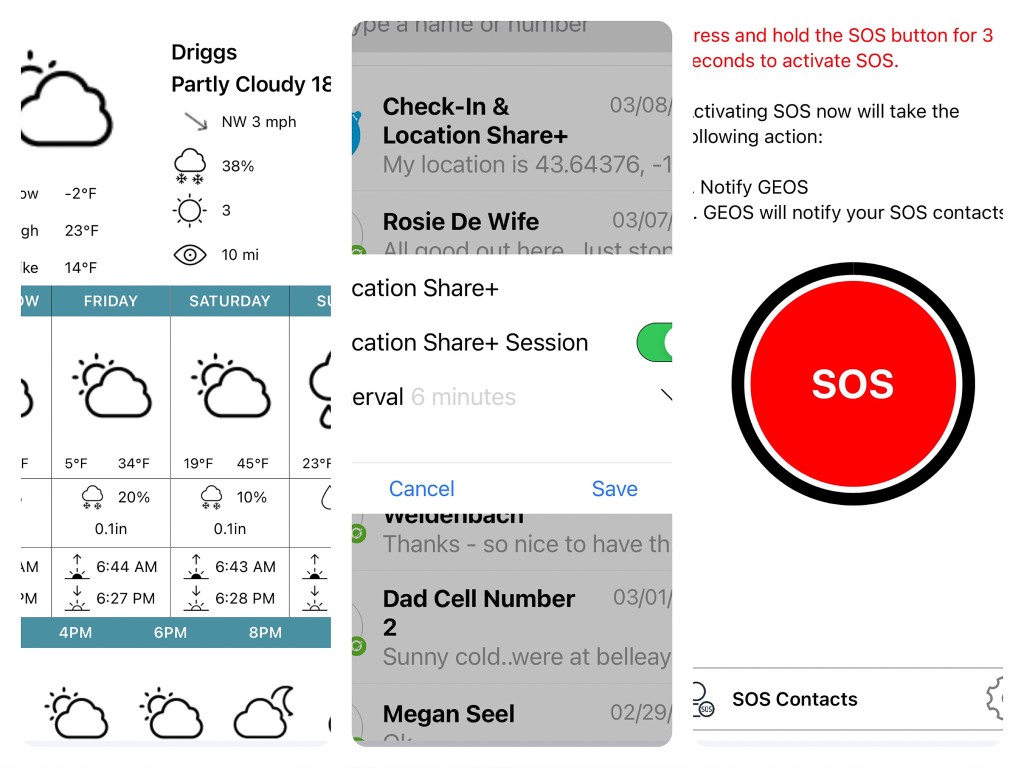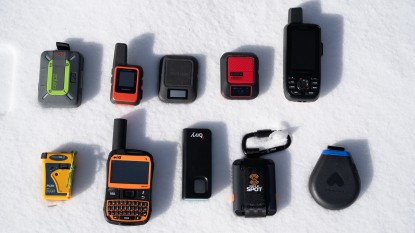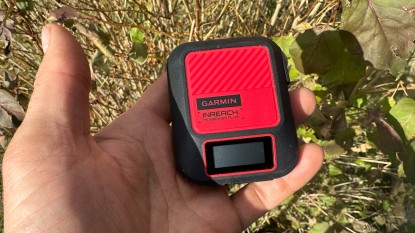ZOLEO Satellite Communicator Review
Our Verdict
Compare to Similar Products
 This Product
ZOLEO Satellite Communicator | |||||
|---|---|---|---|---|---|
| Awards | Occasional Activation Bang for the Buck | Best for Standalone Use | Great Value for SOS Only | ||
| Price | $199.00 at Amazon Compare at 2 sellers | $199.95 at REI Compare at 2 sellers | $39.99 at Amazon Compare at 2 sellers | $249.95 at REI Compare at 3 sellers | $369.95 at REI Compare at 2 sellers |
Overall Score  |
|||||
| Star Rating | |||||
| Bottom Line | This is a smooth, comprehensive two-way communicator that relies on a proven satellite network and brings innovations that raise the bar | A compact, full service satellite messenger that has all you need, and is close to all you would want | This is a tiny device from a new player in this market, using an inexpensive satellite network with great potential. The catch is that we don't know much about this satellite network, and the SOS button on the device is fully exposed to potential inadvertent triggering | If you want two-way texting that doesn't rely on a smartphone and tend to travel in the Americas and Europe, this one's is for you | A small, satellite-linked emergency communicator that is exactly what you need and nothing more |
| Rating Categories | ZOLEO Satellite Com... | ACR Bivy Stick | Motorola Defy Satel... | SPOT X | Ocean Signal rescue... |
| SOS/Emergency Messaging (30%) | |||||
| Non-Emergency Messaging (25%) | |||||
| Signal Coverage (20%) | |||||
| Ease of Use (15%) | |||||
| Portability (10%) | |||||
| Specs | ZOLEO Satellite Com... | ACR Bivy Stick | Motorola Defy Satel... | SPOT X | Ocean Signal rescue... |
| 2-way Messaging? | Yes | Yes | Yes | Yes | No |
| 2-way Messaging Available via Cellular/Wifi? | Yes | No | Yes | No | No |
| Custom Messaging Viewable and Composable on Device? | No | No | No | Yes | No |
| Passive Tracking (turn on and forget about it - viewers at home can watch your progress on the web) | No | Yes | Yes | Yes | No |
| Weight w/ Batteries | 5.3 oz | 3.6 oz | 2.4 oz | 6.8 oz | 4.0 oz |
| Battery Life | 200+ hours when checking messages every 12 minutes | Up to 120 hours | Up to 96 hours | 240 hours | 24 hours |
| Waterproof Rating | IP68 (protection from harmful dust. Rain, splashing, and accidental submersion at least 30 minutes) | IP67 (protection from harmful dust. Rain, splashing, and accidental submersion up to 30 minutes) | IP68 (protection from harmful dust. Rain, splashing, and accidental submersion at least 30 minutes) | IPX7 (No dust rating. Rain, splashing, and accidental submersion up to 30 minutes) | No Formal Rating. Likely exceeds rating system. Claimed "Up to 15 meters" |
| Pairs with Smartphone? | Yes | Yes | Yes | Yes | No |
| Requires recipient to use a special app for two-way communications? | Yes | Yes | Yes | No | N/A |
| On Device Functions (if you lose or disable your smartphone) | SOS, check-in. All texting requires smartphone | SOS, check-in, tracking. All texting requires smartphone. | SOS, check-in. All texting requires smartphone. | All.Texting is slightly faster on smartphone. | All. |
| Satellite Network | Iridium | Iridium | Skylo | Globalstar | COSPAS/SARSAT |
| Dispatch service | GEOS | Global Rescue | Focus Point International | Focus Point International | COSPAS/SARSAT |
| Dimensions | 3.5" x 2.6" x 1.0" | 1.9" x .9" x 4.5" | 3.3" x 2.4" x 0.4" | 6.5" x 2.9" x 0.9" | 3.0" x 2.0" x 1.3" |
| Volume | 9.1 CU IN | 7.7 CU IN | 3.2 CU IN | 17 CU IN | 6.8 CU IN |
Our Analysis and Test Results
The ZOLEO is a mature contender in the category of two-way satellite messengers with nearly everything we look for in a satellite messenger for wilderness travel. The only major feature it lacks is the ability for the user to view or compose customized messages from the device itself. All customized, two-way messaging must be conducted through the ZOLEO app. Otherwise, this device has messaging, satellite coverage, portability, and ease of use that tops the field.
Performance Comparison
SOS/Emergency Messaging
SOS Messages from the ZOLEO are sent from either the app or from the device itself. Provided your satellite coverage is adequate, that SOS message is transmitted via ZOLEO to Global Rescue Inc., a worldwide, private-sector emergency dispatch organization. Global Rescue notes your location and some basic identification information and then works to secure local emergency response. That local emergency response varies greatly depending on your location and many other factors.
Thankfully, we did not have to employ the SOS messaging attributes of the ZOLEO. We like that a help message can be sent either from the app or from the device alone. If your smartphone is damaged, out of battery, or missing, you can still request help in a dire situation. We also like that ZOLEO contracts with a proven, large-scale dispatch agency. Beyond the conclusions we can make based on our understanding of how this technology and service work, we cannot comment first-hand on the emergency messaging of the ZOLEO.
Non-Emergency Messaging
In some ways, the ZOLEO has the best possible non-emergency messaging on the market. You can use your familiar smartphone keyboard, and conversations are organized like any other modern messaging app. This is fairly consistent across the handful of two-way satellite messaging products on the market.
The ZOLEO sets itself apart with non-emergency messaging that is seamless across different connectivity types. You can have one text chain that works via satellite and via cell/WiFi. This is a welcome attribute for those traveling in and out of signal and isn't ubiquitous on the market currently. It seems like a relatively simple software change that may soon come to the services that don't currently do it.
You can also send a preset “I'm OK” message from the app or the ZOLEO device. This is similar to other products on the market. At the very least, with this attribute and a good understanding between you and your emergency contacts in civilization, you can still let people know that you are safe if you damage or lose your smartphone.
Our one major wish is that the ZOLEO allowed viewing and composition of customized messages on the device itself. On a small device, this is going to be a cumbersome prospect, and typing in the smartphone app will always be easier. Nonetheless, in the scenario in which your smartphone is incapacitated, being able to make valuable and nuanced two-way correspondence is quite valuable.
Signal Coverage
The ZOLEO uses the global and proven Iridium network for its satellite communications. Our test team has extensive experience with this communication network and can vouch for it. Of the choices for global, two-way communication, it is definitely the best we know of that is available to the private sector.
The Iridium network covers the entire earth but is subject to all the ubiquitous vagaries of satellite communications. All satellite communications require an unobstructed “line of sight” between the device and the satellite it is communicating with. Trees, buildings, and steep terrain can and do interfere. Iridium's “Low Earth Orbit” satellites move overhead, resulting in a signal that comes and goes with time. You might have a connection now and lose it in minutes. You might not see a signal right now, but it could appear in a little bit. In certain terrain (dense forest, inside buildings, deep and narrow canyons), you might never get any sort of satellite signal.
Ease of Use
The ZOLEO is slick and simple, and we had no problems setting it up and getting messages going. Starting conversations, whether from the ZOLEO sender or from any sender in civilization is simple and clean. If the correspondent in civilization equips themself with the free ZOLEO app, two people can correspond with even longer messages than if the civilization correspondent were using just an email address or phone number.
Our test team is well versed in the realities of satellite communications. Our commentary on the relative ease of use and signal coverage is calibrated against all satellite communications and is based on extensive and deep testing. You will find other online reviews of all sorts of satellite communication devices and services that indicate profound issues or differences in quality. These reviewers are likely less familiar with the realities of satellite communications. All satellite communications are pretty annoying and slow, regardless of the hardware or service. Satellite use of the ZOLEO does as well or better than most but will never replicate the ease of texting with a cell signal or WiFi.
The Bluetooth connection between the Zoleo device and app is particularly durable. In testing we tried to “lose” the connection out in the wild and could not. This is great. Other options on the market might lose the connection and/or app “login” and you cannot regain that connection without returning to signal.
Portability
The ZOLEO device is almost as small and light as the smallest options on the market. It feels robust, and all the buttons are secure and weatherproofed. ZOLEO secured third-party endorsement of the weather resistance, and it passes to the “IP68” level. This means it is certified to be “water-resistant.” This is all you should need. Don't submerge it deeply for hours, and you'll be good to go.
There are other, smaller options on the market, but not by much. That we are discerning between products that weigh 4 ounces and 5 ounces (the ZOLEO weighs 5.3 ounces on our calibrated scale) would have been unheard of a decade ago. Two-way, wilderness communication equipment that weighs less than your standard apple is something that we couldn't have imagined not that long ago. Sure, it could get smaller, but not by much. We are pleased with the portability of this device.
Should You Buy the ZOLEO Satellite Communicator?
The Zoleo works well and uses a proven satellite network. We have a few requests for its functionality (mainly, more options on the device itself, in case your phone is disabled or unavailable), but it is overall a worthy choice.
What Other Personal Locator Beacons Should You Consider?
For less cost, you can get emergency-only or one-way-only messaging. The Ocean Signal rescueME PLB1 is a very inexpensive way to get emergency-only messaging. The SPOT Gen4 adds outbound routine messages, but the Zoleo has two-way options. The Garmin inReach Messenger has two-way messaging, like the Zoleo, but allows you to view and compose those messages on the device (albeit in a tedious fashion), should your phone be incapacitated.
















